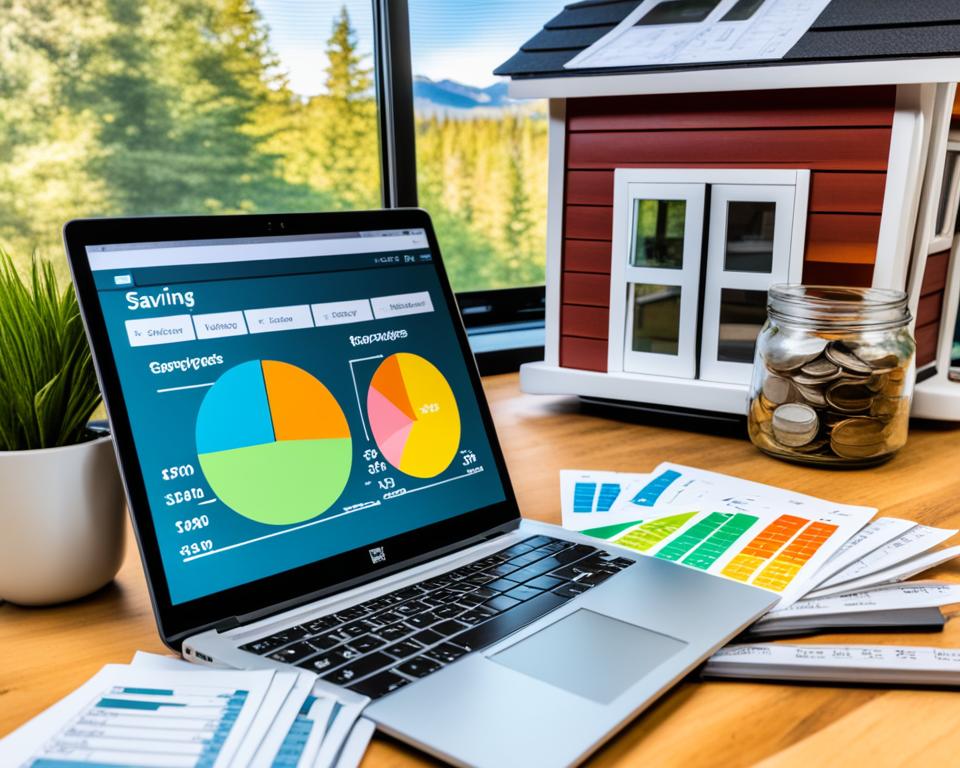Did you know that the average American homeowner spends nearly one-third of their income on housing? But, those who choose tiny house living often spend much less. We’re going to explore the costs of living in a tiny house. This isn’t just about having a smaller home. It’s about choosing a lifestyle that values saving money and being eco-friendly. Choosing this path means more freedom for meaningful adventures and smart financial planning for tiny house living.
Ready to start this journey? We’ll look at everything from the start-up costs to the regular bills. From finding the perfect spot to understanding daily expenses, we’re here to help. We aim to make tiny house living both a dream and affordable.
Unveiling the Cost of Land for Your Tiny Home
Finding the right piece of land is key in tiny house living. It’s the start of making our tiny home dreams come true. It involves looking into zoning laws and choosing the best type of ownership for our goals and lifestyle. Decisions here affect us for a long time. Let’s explore how to secure land for your tiny home.
Zoning Laws and Land Acquisition
Local zoning laws are crucial for setting up a tiny home. They govern what and where we can build. Exploring local zoning ordinances is necessary to find suitable land. This step prevents legal issues that could raise costs later.
Leasing vs. Buying: What’s Best for Your Tiny Home?
Choosing to lease or buy land needs careful thought. Leasing can mean lower initial costs. This might help keep our budget for other small living expenses. Buying requires more money upfront but may lower costs in the long run. We must weigh our future plans against our financial situation to decide.
Financial Implications of Choosing the Right Plot
Choosing a plot is crucial in managing tiny home costs. It involves understanding loan costs, down payments, and interest rates. These are fundamental parts of our tiny house expenses. Planning ahead financially is vital to avoid escalating costs.
Now, let’s look at the possible costs related to land:
| Expense Category | Average Cost | Notes |
|---|---|---|
| Land Purchase Price | $10,000 – $100,000+ | Varies greatly depending on location and size |
| Property Taxes | $500 – $2,000/year | Depends on local tax rates and land value |
| Utility Connections | $1,000 – $10,000+ | One-time costs for water, sewer, electricity |
| Land Preparation | $1,200 – $5,000+ | Clearing, grading, and readying for construction |
Financing Options for Tiny House Enthusiasts
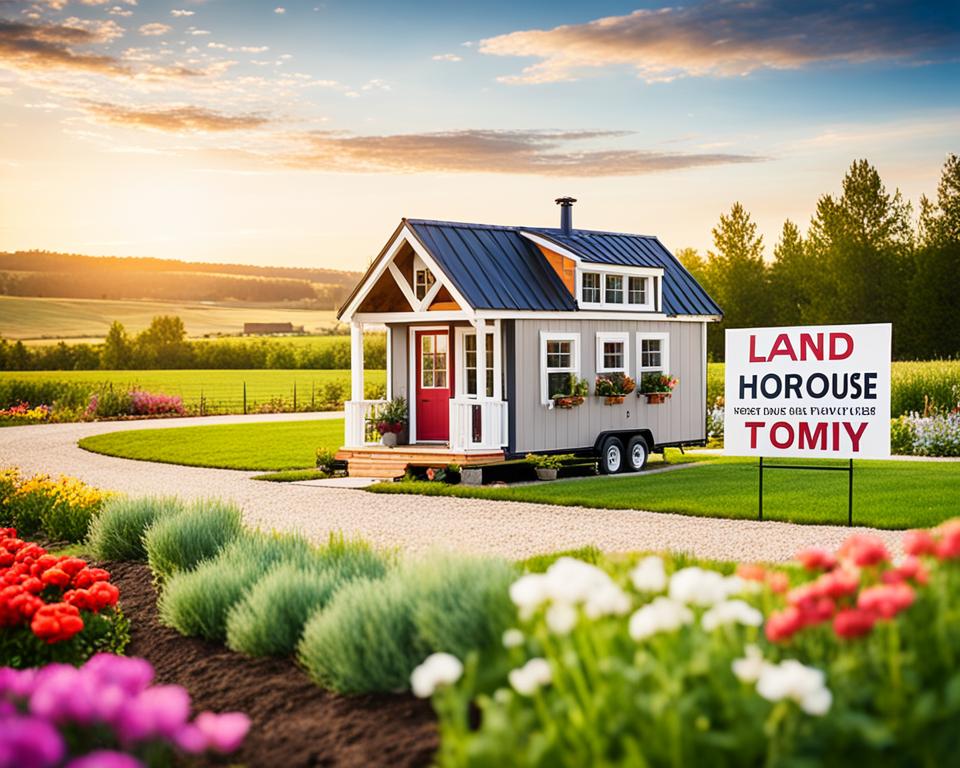
Tiny house living involves more than just downsizing. It means looking at the numbers closely. Traditional mortgage options don’t always fit our needs. So, we explore different ways to finance our small homes. It’s about knowing the upfront costs and the ongoing expenses of tiny living.
Navigating Land Loans and Down Payments
Getting a tiny house often starts with buying land. Land loans are a common choice but come with strict rules. You need a good credit score and a big down payment.
Lenders see land loans as risky, so they charge higher interest rates. Having a detailed plan for your land can increase your chances with lenders.
Understanding the Risks and Rates
Knowing the risks and rates of tiny house financing is key. Land loans are riskier for lenders, so they have higher interest rates. We need to ease the lender’s worries while protecting ourselves from fluctuating rates.
Construction loans can help pay for building your tiny house. They bridge the gap to getting a mortgage later. But, remember, living in a tiny house means understanding all future financial commitments.
We’ve started diving into the financial aspects of tiny house living. This foundation helps us prepare for what’s ahead. Soon, we’ll explore the typical costs of living in a tiny home.
Typical Expenses When Living in a Tiny House
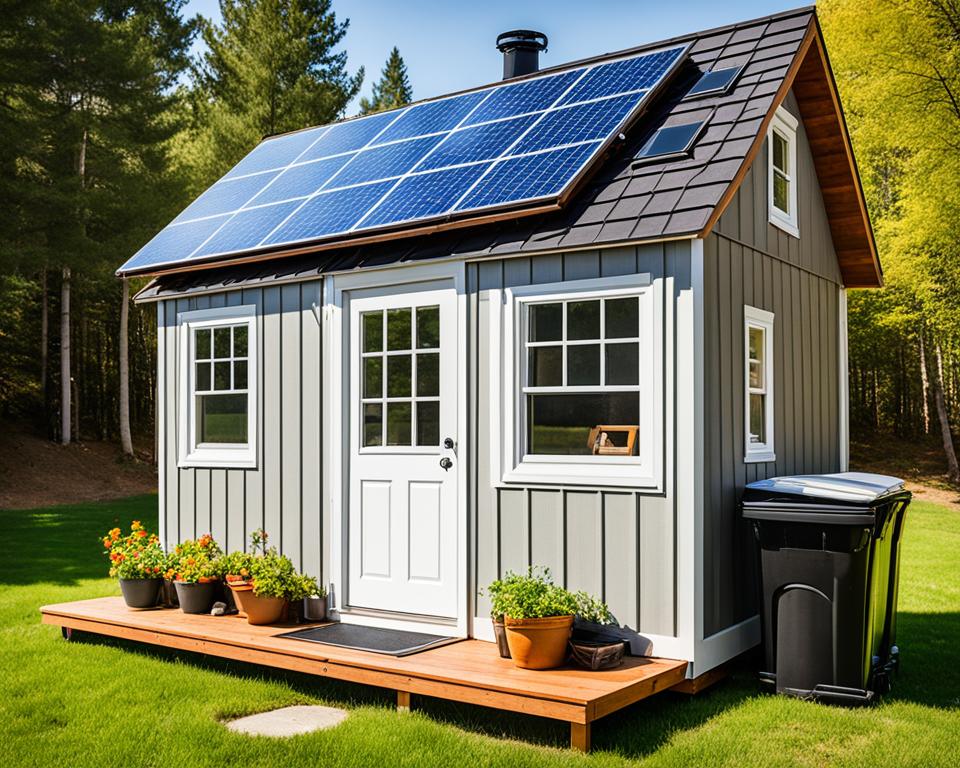
Tiny house living is getting more popular because it’s affordable and sustainable. However, it’s important to know essential expenditures in a tiny home. This comes with downsizing. Living in a tiny space is different from bigger homes. This difference is mainly due to the lifestyle and the spaces themselves.
Buying a tiny house may seem cheap at first. But, it’s crucial to budget for upfront costs and tiny house monthly costs. The price varies a lot. It depends if you get a basic tiny house shell, which ranges from $17,000 to $37,000. Or, a DIY kit home starting under $10,000 for those good with construction.
The main monthly financial commitments for tiny home owners usually are:
- Utilities (electricity, water, sewage, and gas)
- Insurance (covering both the dwelling and personal property)
- Home maintenance (regular upkeep and repairs)
- Lifestyle amenities (internet, streaming services)
One benefit of tiny house living is lower utility bills due to less space. Adding renewable energy solutions and efficient appliances cuts these costs even more. By choosing wisely, owners can save money and reduce their ecological footprint.
To sum it up, tiny house living includes several financial factors. While it usually means lower expenses, starting costs need careful planning. By living more sustainably in smaller spaces, we gain more than just saving money. We live a life full of simplicity and purpose.
Sustainable Living: Reducing Utility Bills in a Tiny Home
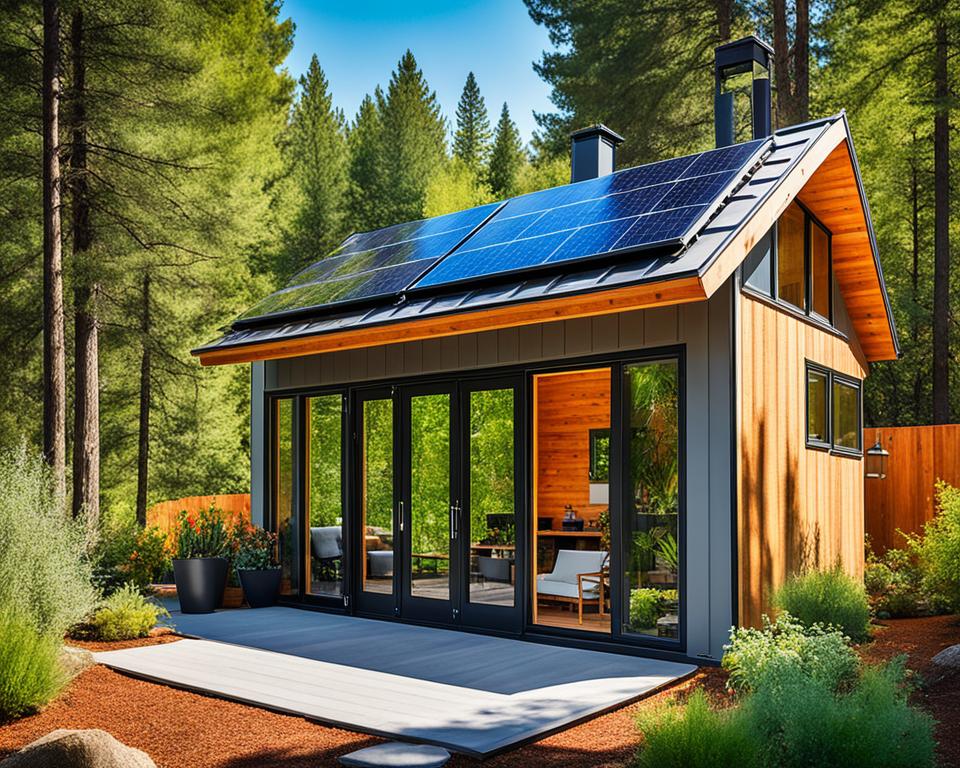
Tiny house living helps manage costs and promotes sustainability. A minimalist lifestyle lowers utility bills. But smart home design and choosing the right appliances can save even more. This way, we live a life that’s good for both our wallets and the Earth. Energy-efficient solutions play a big part in budgeting for a tiny house lifestyle.
Energy-Efficient Appliances and Their Impact
Using energy-efficient appliances is a wise choice for tiny house living costs. A-rated stoves, fridges, and boilers use less energy. This helps reduce our electricity bills. It also encourages living in a way that cares for the environment.
Opting for Renewable Energy Sources
Choosing renewable energy is key for sustainable living and smart budgeting. Solar panels are a favorite for many tiny homeowners. They cut down on traditional power use. With solar power, we save money in the long run and we’re kinder to the planet.
Benefits of Super-Insulation and Off-Grid Potential
Super-insulation keeps heat in and improves our tiny homes’ efficiency. Thinking about going off-grid? This can help us avoid changing utility costs. Imagine producing your own power. That’s what a well-insulated, off-grid tiny home offers.
Below is a table showing how much we might save with energy efficiency and renewable energy:
| Feature | Monthly Energy Consumption | Estimated Monthly Savings |
|---|---|---|
| Energy-Efficient Appliances | Reduced by up to 50% | $30 – $70 |
| Solar Panel Installation | Varies based on usage | $20 – $120 |
| Super-Insulation | Decreased Heat Loss | $25 – $50 |
Our steps toward a sustainable tiny house life help our pockets and the Earth. Picking the best energy-efficient appliances, going renewable, and super-insulating our homes are big moves. They cut down utility bills and set us free financially. Let’s keep choosing these eco-friendly options. They better our budgeting for a tiny house lifestyle and the planet’s health.
Budgeting for Tiny House Construction and Upkeep
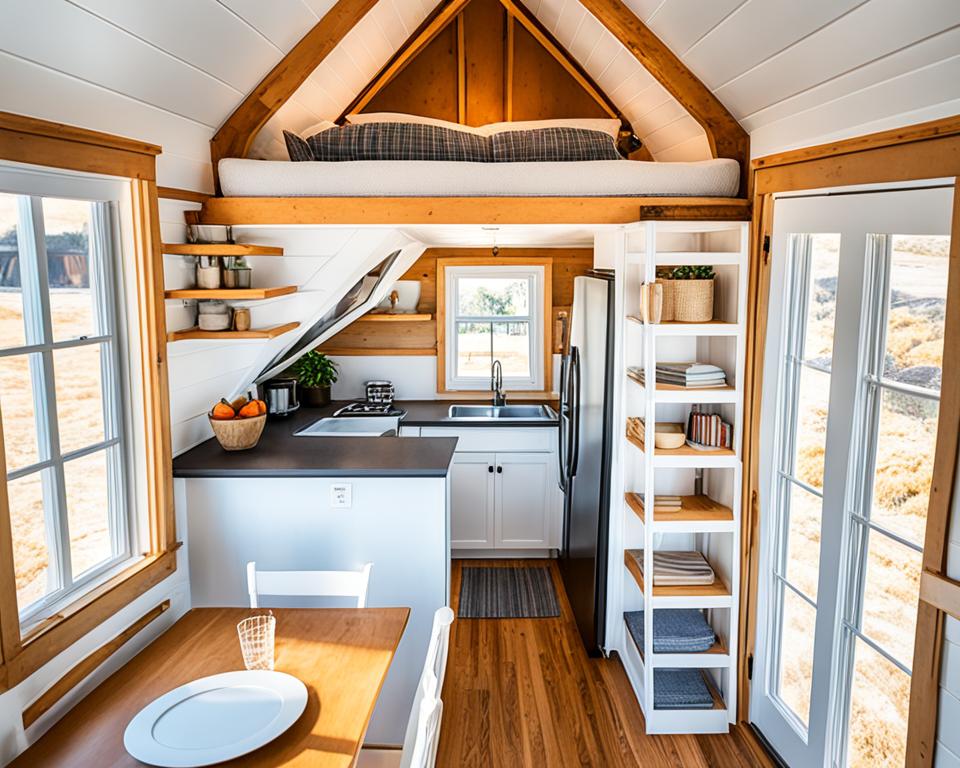
Entering the tiny house lifestyle requires budgeting. It’s crucial to plan expenses for building and upkeep to enjoy the benefits of living small. This means being smart about budgeting for a tiny house lifestyle. We will look into managing expenses in a small living space.
The building phase offers choices like prefab shells or traditional stick-built homes. Wisely using resources then helps make our tiny home sustainable long-term.
Careful planning for construction means finding ways to save with no quality loss. For example, using cash refinance or putting in our own work can cut costs.
Maintenance in tiny houses tends to be cheaper thanks to newer materials. Still, we need to budget for essential costs like insurance, which can be reduced by shopping around.
Even with a tiny house, maintenance is a needed expense. Routine upkeep is affordable and key to keeping our home budget-friendly. Here are some maintenance tips:
- Choosing quality materials and appliances helps in the long run.
- Taking care of small repairs early on prevents big expenses.
- Having a maintenance plan and a backup fund is wise.
The charm of tiny living isn’t just the simple life or smaller eco footprint. It’s also about managing expenses in a small living space well. With a solid budget and upkeep routine, we can fully enjoy our tiny home, both financially and personally.
The Tiny House Movement: Size Does Matter for Your Wallet
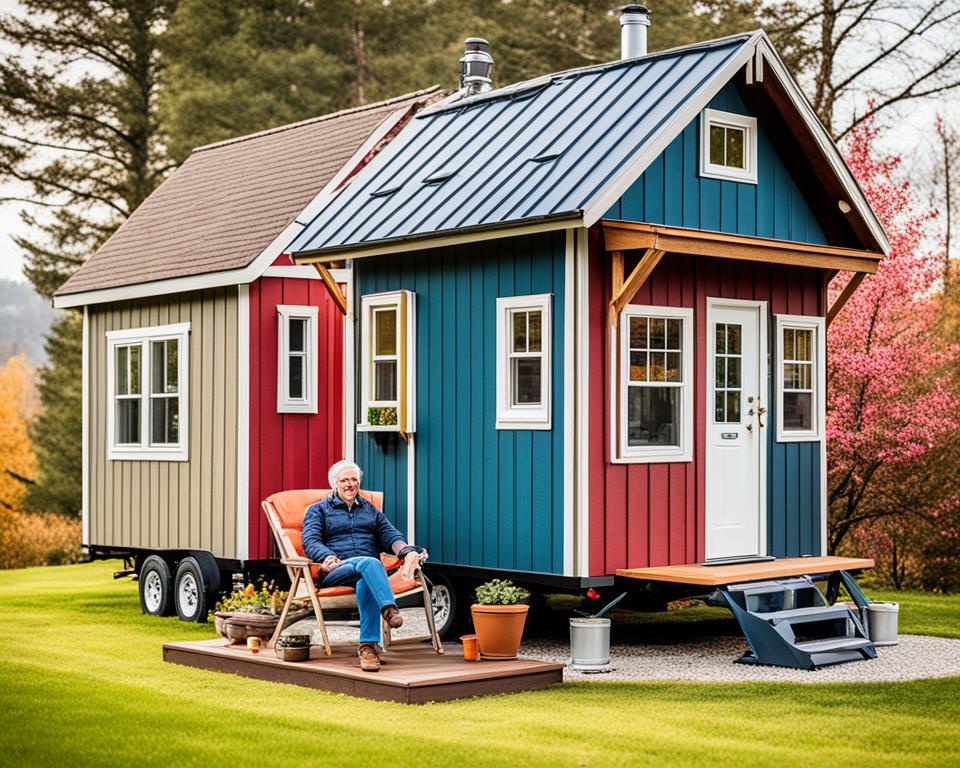
Exploring tiny houses shows us that saving money is just the start. It’s really about choosing a life that values simplicity and smart spending. Living small means we embrace a simple, efficient way of life. This also cuts down on tiny house living costs greatly.
Comparing Tiny Home Living Costs with Traditional Housing
Tiny homes and traditional homes have very different costs. A regular house can make us face big mortgages. In contrast, a tiny house is much cheaper. This leaves us with more money for enjoying life.
Tiny houses mean smaller utility bills and property taxes. This is because they need less space to heat, cool, and light. So, buying a tiny home is not just a cool lifestyle choice. It’s also very smart financially.
The Perks of Land Use and Minimalism for Reducing Expenses
Owning less land means having fewer chores and spending less money. The minimalist life that tiny house living promotes makes us think hard about what we really need. This leads to big savings and feeling better emotionally.
By having fewer things, we get to enjoy life more. We can use our money for things that truly make us happy.
| Expense | Traditional Home | Tiny House |
|---|---|---|
| Mortgage/Rent | $1,200/mo | $500/mo |
| Utilities | $200/mo | $50/mo |
| Property Taxes | $150/mo | $15/mo |
| Maintenance | $100/mo | $25/mo |
| Insurance | $75/mo | $40/mo |
Choosing financial planning for tiny house living means more than saving money. It’s about a lifestyle shift that brings big financial upsides. The costs of tiny house living are not just lower. They offer more value, making every bit of space and every dollar count.
Embracing a Greener Lifestyle: The Rise of Foraging and Gardening
Moving into tiny houses means more than living simply. It connects us with an eco-friendly life. This change is not only about liking minimalism or cutting costs. It leads us to rely on ourselves by foraging and gardening.
Growing our food is rewarding and saves money on groceries. This can make our tiny house life cheaper.
Foraging has come back as a cool, green hobby. We’re exploring nature, learning about plants, and finding wild foods. This adds to our diet in healthy, tasty ways. It also cuts down on how much we spend living in a small space.
Tiny homes don’t have to limit our gardening dreams. Urban gardens and pots fit perfectly for those of us with less space. These smart choices lower our living costs. They also help our health, happiness, and the planet.
Gardening and foraging do more than feed us. They tie us to the earth and nature’s cycles in deep ways.

